Chard Varieties: Which one should I grow in my Garden?
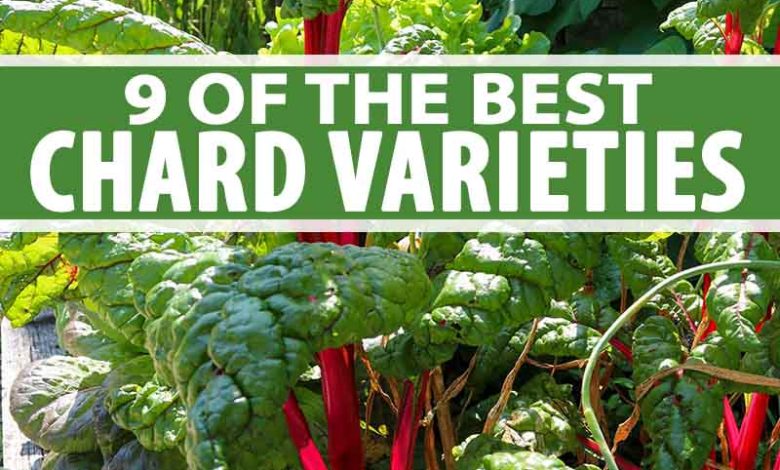
Swiss chard is an edible plant that stands out in the plant world for its large leaves, and at a nutritional level, because it is very rich in calcium.
It is an easy species to grow in any home garden along with many other vegetables.
As for its preparation in the kitchen, it is quite simple, being consumed alone, in salads or as a garnish.
The best thing is that there are many varieties of chard to plant in your garden or garden. Let’s see some of them.
chard white stalk
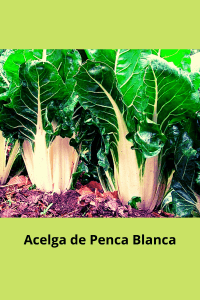 It is the most common type of chard, both at the planting level in home gardens and for sale in supermarkets.
It is the most common type of chard, both at the planting level in home gardens and for sale in supermarkets.
It has wavy leaves that come in a perfectly dark green hue.
In the case of the leaves, they are white and very wide, reaching up to 15 centimeters in certain cases.
It is a species of easy cultivation and abundant harvest, which is why it is ideal for home gardens that have enough space.
Chard of Lyon
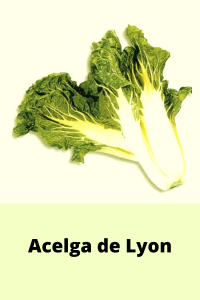 It is characterized by very large leaves that are variable in depth of color, usually in a yellowish green tone.
It is characterized by very large leaves that are variable in depth of color, usually in a yellowish green tone.
It has an exquisite taste and that is why it has such a preference for being consumed in homes. It is also a type of chard of very high quality.
The penca, in this case, is perfectly white and its width, under certain conditions, can reach up to 10 centimeters.
Finally, it must be said that it usually generates very abundant harvests in its time, defining wavy leaves that are easy to differentiate.
rainbow chard
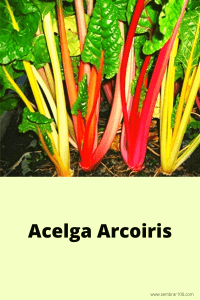 They are chard that come in a variety of colors, depending on the type of seeds that are bought in the store (normally they come in a variety).
They are chard that come in a variety of colors, depending on the type of seeds that are bought in the store (normally they come in a variety).
It is a very useful species for consumption by children because they are fun, they are prepared in the same way as the green ones and they maintain the same nutritional level.
As for the cultivation process, it is similar for all varieties of chard.
However, in this case you can take advantage of their colorful properties to play around the decoration, placing them in spaces such as terraces.
They are chard that also develop large leaves, but whose penca is variable depending on the color of the chard.
That is, if the chard is red, the most normal thing is that its stem is red, although in a stronger tone.
burgundy chard
 It is also known as red chard. Its sale is rare, but it can be grown at home or obtained in vegetable markets.
It is also known as red chard. Its sale is rare, but it can be grown at home or obtained in vegetable markets.
It is a very nutritious species, because in addition to the high calcium content, it also provides vitamin K, magnesium and very few calories.
The normal thing is to consume it in its young version, since the nutrients can be better used by adding it to salads when raw.
When it is more advanced, it is necessary to boil it in water for 10 or 15 minutes to soften it.
It has a very easy to recognize texture because its leaves are green and the stems are red, which is why it has been given this name.
This property, in addition, allows to provide more color to the food.
Silverado Chard
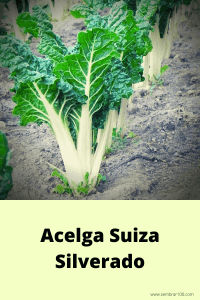 The Silverado chard is of Swiss origin and has characteristics very similar to that of the white penca, with large dark green leaves.
The Silverado chard is of Swiss origin and has characteristics very similar to that of the white penca, with large dark green leaves.
It is important to note that, sometimes, the Silverado chard stalk varies towards silver tones.
However, its growth rate is much slower, which allows it to take on a more pronounced and exquisite flavor on the palate.
It can be consumed in its baby version, for fresh salads, or in the adult version, boiling to soften.
In addition, for home gardens, it is very effective in terms of organization because you can work with the entire plant or with the leaf-by-leaf system.
Chard bright yellow
The brigth yellow chard is characterized by dark green leaves, but its leaves are a contrasting strong yellow.
On a visual level, it generates a very pleasant impact, so in addition to consumption, it can also be used to beautify the space for the garden.
On the other hand, the flavor is penetrating, with a high content of vitamins and minerals, which make it ideal to incorporate into a healthy diet.
Its sowing can be done from seeds sold in agricultural stores, respecting the normal conditions of cultivation of chard, which, in general, are identical for all their varieties.
Other types of chard that are also highly recommended for consumption are Gin, Fordhook Giant and rhubarb.
In this way, it is evident that the field of work with Swiss chard is very varied, allowing us to recreate a true show at planting level.
But not only that, but we will be incorporating leaves with a high nutritional content, delicious and very easy to prepare, into our diet.

![Photo of Potted Olive Tree Care: [Soil, Humidity, Pruning and Problems]](https://www.complete-gardening.com/wp-content/uploads/2022/08/potted-olive-tree-care-soil-humidity-pruning-and-problems-390x220.jpg)

![Photo of Philodendron Xanadu: [Crop, Irrigation, Associations, Pests and Diseases]](https://www.complete-gardening.com/wp-content/uploads/2021/06/Philodendron-Xanadu-scaled-1-390x220.jpg)
